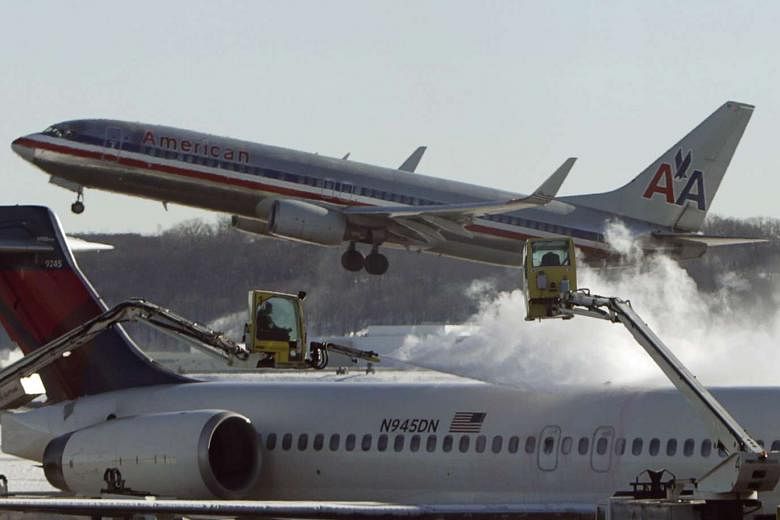LONDON • American Airlines Flight 109, travelling to Los Angeles from London, was more than two hours into its journey and close to Keflavik, Iceland, when several passengers and crew members suddenly and mysteriously became ill.
Those on board were startled, news reports said, and the pilot decided to fly back to London. The plane landed safely. But on Thursday, the mystery of what happened on the plane remained unclear.
American Airlines said in an e-mail statement that two passengers and several flight attendants had complained of light-headedness during the flight on Wednesday, prompting the captain to return to Heathrow Airport.
It said there were 172 passengers and 16 crew members on the Boeing 777, which landed at 5.05pm. News reports said the plane had been met by paramedics, police cars and firefighters.
Passengers and crew members were evaluated by health officials, the airline said, but none requested further medical attention. Luggage was removed for inspection, The Daily Telegraph reported.
The aircraft was inspected by maintenance workers on arrival, the company said, but it declined to elaborate. Although it remained unclear what had caused the people on board to become ill, dizziness and loss of consciousness are among a range of symptoms that have been associated in the past with jet engine fumes leaking into the cabin.
Modern commercial jets are designed to siphon heated air, drawn from the engines, for use in cabin pressurisation and air conditioning systems. Occasionally, that air can become contaminated with traces of engine oil or hydraulic fluid, provoking acute symptoms, sometimes called aerotoxic syndrome, that later subside.
Airlines and regulators closely monitor such risks, but some pilots' and flight attendants' unions worry about the health risks of repeated exposure to toxic substances. Four Alaska Airlines flight attendants filed a lawsuit against Boeing last year after they fell unconscious when toxic fumes entered the cabin during a flight in 2013, forcing an emergency landing in Chicago.
Their lawsuit claims that Boeing was aware of the health risks from contaminated "bleed air", while the company has long maintained that cabin air is safe to breathe.
News reports of the American Airlines flight fit "a classic pattern" suggesting contamination by engine oil, said Ms Susan Michaelis, head of research at the Global Cabin Air Quality Executive, a group representing aviation industry workers. Low-level contamination of cabin air by oil "happens on all flights", Ms Michaelis said, but in most cases it is not detected by people on board.
Aviation regulators acknowledge that engine fuel leaks are the primary cause of cabin air contamination, but they insist that the phenomenon poses a limited risk to passenger safety.
Nonetheless, the International Civil Aviation Organisation published guidelines last year aimed at raising industry awareness of the problem.
NEW YORK TIMES

